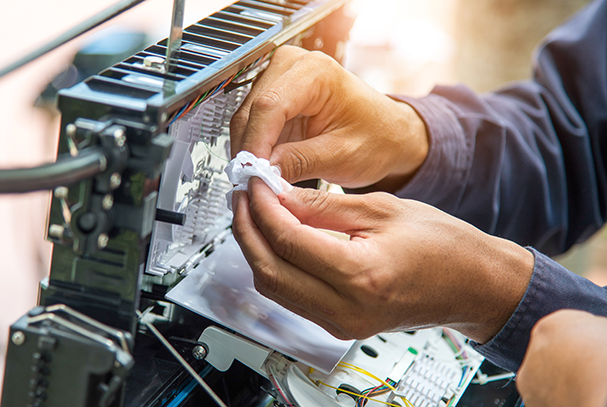Are you ready to get up to speed? Fiber internet is rapidly changing the game when it comes to high-speed connectivity. It promises lightning-fast upload and download speeds that can revolutionize the way you surf, stream, and make connections online. But what exactly is fiber internet and how does it differ from traditional internet options? Read on for all the answers you need about fiber internet’s capabilities – and how it can help you get up to speed!
Before Fiber: DSL and Cable
The way data is transferred around the globe has been changed by fiber internet. The internet connection is faster than cable and dial-up and can carry a large amount of data in a single line, sometimes even reaching multiple terabits of data transfer without much difficulty.
Digital Subscriber Line (DSL) internet utilized the existing copper telephone lines to transmit data. DSL, which is an older internet technology, has been largely replaced by cable due to its slow speed. However, it is still available in some rural areas. On average, DSL offers a speed of about 2 Mbps.
Cable internet typically utilizes coaxial cable, which is also made of copper. This type of internet service is often offered along with television programming using the same cable network. This is why internet service providers typically offer bundled plans, to provide customers with both TV and internet access. Cable speeds typically range from 20 Mbps to 100 Mbps.
The Fiber Revolution
With fiber optic internet, data is transmitted through fiber optic cables by using light pulses which pass through tiny glass fibers. Fiber cables have the ability to carry multiple signals simultaneously, similar to how electricity passes through a copper wire. Because glass fibers are very small, they are typically grouped together into larger cables called “fiber optic trunk cables,” which have multiple fiber lines within them. The download speeds for fiber-optic range between 150 Mbps to 500 Mbps, and the upload speeds range from 65 Mbps to 100 Mbps.
Most of the modern internet’s backbone is made up of fiber trunk cables, and you can still experience their advantages even if you don’t have “fiber internet.” The reason behind this is that the Internet Exchange Points (IXPs) rely on fiber optic trunk lines to interconnect with other IXPs, which in turn connect your home or business to the rest of the world.
The Limits of Fiber
One reason for the limited availability of fiber Internet is its high cost. Fiber is typically more expensive to run than traditional copper cables, and the infrastructure required is often expensive as well. Fiber lines also need to be installed underground or along existing power poles.
Overall, fiber internet is a great option if you want to experience high-speed connections and access large amounts of data quickly. However, it’s important to consider your options and speak with an expert such as ADD Communications to help you make the best choice for your business.
ADD Communications: Expertly Connecting You
At ADD Communications, we understand the importance of reliable and high-speed internet connections. We provide fiber optic cabling and broadband solutions to meet all of your communication needs. Contact us today for more information about our services and how we can help your business make the most of the fiber revolution!
